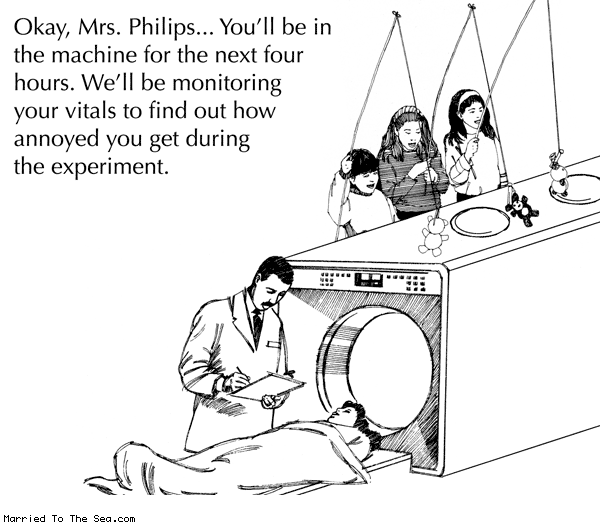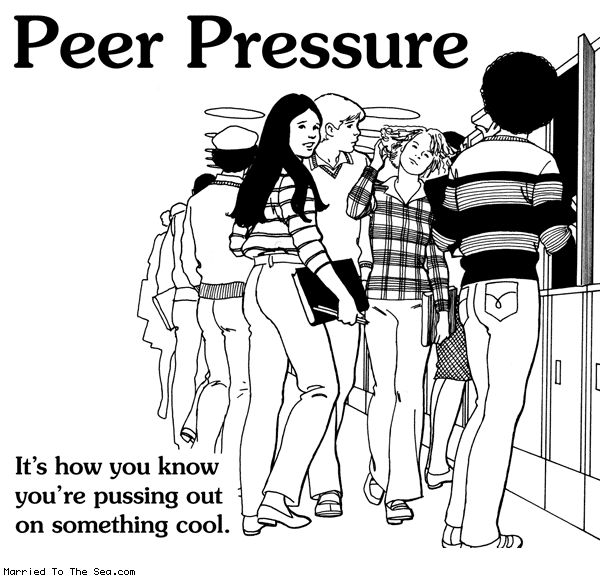Throughout the centuries, various inventions helped humans live better and longer lives – from flush toilets to vaccinations and seat-belts. Before science, religion was a major source of influence and many early public health measures are in fact religious laws – for example, this is probably why Islam and other Middle-Eastern religions (Judaism, also early Christianity) do not allow pork. Subjective reasons aside, pork is associated with many diseases, including numerous kinds of parasites. Imagine how much worse all this can be with scarce water supplies (Middle East is dry!) and with the cleanliness standards of past centuries. In order to minimize the risk, leaders simply used religion to “spread the word”. However, with modern standards and use of refrigerators, we can safely enjoy pork pretty much whenever we want to (if we desire to do so).
Enter science. With new and better equipment, we began measuring more and more (and smaller and smaller) things and soon natural sciences like biology and chemistry took off. We discovered that indeed many “small creatures” cause diseases and found ways to fight them – from antibiotics to vaccinations we have improved our likelihood of surviving. With infectious diseases under control (in the Western world), we increased the life expectancy to around 80 years. However, this opened the door for new diseases – cancers and cardiovascular. When people stopped dying from accidents and infectious diseases, they did not change their lifestyles. In combination with living longer, this resulted in various chronic diseases that are top killers today.
The problem is that conventional methods are not effective anymore. You cannot get vaccinated for lung cancer and smoke freely for the rest of your life. You cannot eat a pill and get rid of diabetes. What we need are behavioral changes. A typical measure is increasing taxes (e.g. cigarettes and alcohol), because it is believed that it will drive the consumption down. However this measure has some ethical issues - Is it right to increase taxes? If so, how much should we raise the taxes? Will this just lead to a big black market? That’s what’s happening with cigarettes in New York.
 |
| http://graphics8.nytimes.com/images/2011/04/05/nyregion/yjploosies/yjploosies-articleLarge.jpg |
Bans are also popular (in terms of restrictions on where you can smoke), however cigarettes are still legal. But let’s think of a world where cigarettes are illegal – would people stop smoking? While it would very much likely decrease the number of smokers, it would not erase smoking completely – cigarettes would just become an illegal drug. This means thousands of today’s average citizens would become criminals. Is this fair? What about alcohol? Prohibition has been tested, did not bring any good results, and just made some Mafioso’s rich… Another typical measure was introducing warning signs on the cigarette boxes… Did they make any difference? I actually don’t know. Did anyone measure it?
Similar case with the food industry – should we increase taxes? Introduce labels? Ban things? How much would things change? What do we even want to accomplish – what is the standard? Is it the 2000 calorie diet? But is it really all about calories and getting fat? What about getting the right nutrients like vitamins, omega-3 acids, minerals like magnesium, etc? But will the increased complexity of adding more information drive healthy behavior? And is it the same if you eat a pill of vitamin C compared to eating an orange (or a few)? Is it possible that vitamin C pills (especially non-organic ones) are like shooting at a target with a shotgun? In my last job before coming to America I was selling dietary supplements and one of our top products was organic magnesium – they idea behind is is that any non-organic form just doesn’t cut it, because our body can better absorb magnesium from organic compounds than synthetic ones…
 |
| http://leahkaufman.com/wp-content/uploads/2010/08/for-photo-illustration-of-a-tomato-with-a-food-label-on-it-e6b91523468f8770_large.jpg |
What I think we need is a lot of research to determine what actually does work. And not just that – you have to know your target audience. What might work for a young white girl might not work for an old black man. What needs to be determined first is who is a high-risk group anyway; you have to define your population. Then, you define exposure and disease. In the case of prevention, I guess the roles are a bit confusing, but introducing a new nutrition label could be considered exposure, and decrease in unhealthy foods bought/ordered a disease (or, better said, outcome). Then you’d want to measure (and account for) other factors: what is the population of the area (if you think in terms of a supermarket, who is the average customer)? What is the racial/ethnic structure, what are the education levels and other socio-economic factors, what are their ages, etc? Digging even deeper - where do you put the label on the box? Should it be emphasized, discreet, in color; should it have more information or just the essentials?
Then comes the measuring of outcomes, where you’d hope that more people would start eating more healthy foods. Are the nutrition labels enough? While 70% of adults might want labels to be easier to read, will they use them? Will they use them right? Will it, in the end, drive a healthier lifestyle?
 |
| http://www.iemily.com/images/foodallergy.gif |
Some want to go further – I recently read about Brian Wansink, who wrote a couple of books on behavioral psychology, nutrition and marketing (and is a former Executive Director of the USDA's Center for Nutrition Policy and Promotion). He also tried a couple of tricks that the junk-food industry used (better branding, better presentation (colors, placement), etc) on fruits in a school cafeteria and sure, kids ate more fruits than ever! All they did was moving the fruits from the middle of the line to the end of the line, putting them in nice bowls and adding a sign prompting the kids to take the fruit! He argues that many factors come into play when it comes to human food consumption, eyes being one of them. In fact, he won an Ig Nobel prize in 2007 for his bottomless bowl of soup – he compared how much people ate if the bowl was automatically refilling without the test subject knowing it and if the subjects ate from a normal bowl. People in the bottomless cohort ate 73% more and didn’t feel any fuller.
 |
| http://upload.wikimedia.org/wikipedia/commons/e/e5/Bottomless_Bowl-Wansink.jpg |
In fact, he discovered many interesting things and some of them are listed in this Wikipedia article:
- Moving from a 12-inch to a 10-inch dinner plate leads people to serve and eat 22% less
- A person will eat an average of 92% of any food they serve themselves
- The average person makes an excess of 250 decisions about food each day
- Low-fat labels lead people to eat 16-23% more total calories
- The Nutritional Gatekeeper of a home influences an estimated 72% of all of the food their family eats
- Because of visual illusions, people (even Philly bartenders) pour 28% more into a short wide glasses than tall ones
- 50% of the snack food bought in bulk (such as at a warehouse club store) is eaten within six days of purchase
I believe he is one of the people in the trenches on the front-line of public health today. The industry and corporations are fighting with everything they got; they are not ashamed of aggressively advertising to kids, our most vulnerable population.
Can we do something similar for healthy foods? The question here is – who should pay for such ads? Why doesn’t healthy food industry fight back? Are they owned by the same people who own the junk-food industry?
To sum it up, we have various factors to consider when it comes to introducing sound policies. We have to find the flush toilets of today, but they are likely not in the form we have gotten used to. Yes, we can start a new revolution of nutrition labels, but will they have the desired effect? They are a necessary component – you need the information to make an informed decision – but they are not a sufficient component. In one of my previous blogs I talked about Jamie Oliver and his goal – to educate. This will become an important part of re-programming people and get them to eat more carefully. I don’t blame junk-food (or any other) industry – their goal is to sell as much as they can. Of course, I would draw the line when it comes to advertising to children, but parents play a role here as well – they sit their kids in front of the TV (or allow them to sit there), when they should be spending quality time with them.
What I think an effective policy of tomorrow will include is information (labels), education (teaching how to buy, prepare and enjoy food) and behavioral psychology. Epidemiology can play a huge, even central, role in this story, as we have to start measuring the effects of these measures. What works, what doesn’t? Are policies inter-related? As Wansink discovered, low-fat labels lead people to eat 16-23% more total calories – which means that solving one problem might just create another one (or a few), unless we keep the big picture in front of our eyes. However, easier said than done. Designing a study proved to be a complicated issue even when it comes to measuring the effect of caffeine on students' GPA. I can only imagine what it takes to build a policy that bring results.








